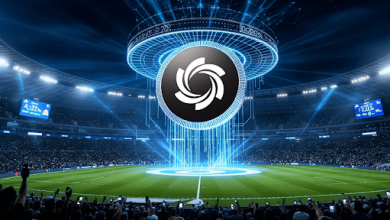Optimizing Mobile App Performance: The Key to Seamless User Experience

In an increasingly mobile-driven world, the efficiency of applications directly influences user satisfaction and business success. Arth Patel, a leading expert in mobile app development, explores the intricacies of performance optimization and the transformative impact of key innovations on app efficiency.
The Science Behind Performance Optimization
Modern mobile apps must balance speed, responsiveness, and resource efficiency. Research shows apps with response times under 100 milliseconds boost user engagement by 89%, while consistent 60 FPS frame rates improve retention and satisfaction, ensuring smooth performance across scenarios.
Reducing Latency for Enhanced Responsiveness
Latency significantly impacts user experience, with apps under 150 milliseconds retaining 37% more users. Developers optimize latency through data synchronization protocols and caching, reducing response times by 47% and server load by 35%, ensuring smooth interactions in high-traffic environments.
Memory Management: The Hidden Performance Factor
Memory management is crucial for app performance. Poor allocation leads to slowdowns, crashes, and higher battery usage. Optimized techniques improve responsiveness by 28%, prevent memory leaks, reduce crashes by 32%, and ensure stability in resource-heavy applications.
Cold Start Optimization: Faster App Launches
The initial loading time of an application significantly impacts user retention. Cold start performance optimization reduces launch times, ensuring users do not abandon the app before it even loads. Research indicates that optimized applications achieve an average cold start time of 1.2 seconds, while unoptimized ones can take over 3 seconds. Techniques such as streamlined resource loading and optimized UI rendering can improve startup times by up to 43%, making first impressions count.
Overcoming Rendering Inefficiencies
Smooth transitions and responsive animations are vital for a seamless user experience. Applications with excessive nested view hierarchies experience up to a 23% increase in frame rendering time, leading to lag and user frustration. Implementing efficient UI structures and reducing unnecessary view updates minimizes performance overhead, ensuring smooth interactions and reducing CPU utilization by 31% during rendering operations.
Network Optimization for Real-Time Performance
With mobile applications relying heavily on data transfer, network latency significantly affects user experience. Research has demonstrated that unoptimized API calls can lead to a 267-millisecond increase in response time, contributing to poor engagement. Implementing advanced caching mechanisms and reducing redundant network requests improves response times by 312 milliseconds on average, ensuring real-time app interactions and reduced data consumption by 45%.
Efficient Resource Allocation Strategies
Proper resource allocation is key to sustainable performance. Through predictive resource allocation, developers can reduce memory consumption by 33% while maintaining application responsiveness. Automated optimization models improve cache efficiency by 41% and reduce cold start times by nearly 300 milliseconds, significantly enhancing user experience. These intelligent allocation strategies help manage resource utilization more effectively across different device types and operating conditions.
Battery Efficiency: The Overlooked Performance Metric
Battery drain is a major concern for mobile users, and unoptimized applications contribute significantly to energy wastage. Studies indicate that inefficient background processes trigger up to 65% more wakelock events, leading to rapid battery depletion. Optimizing location services and reducing unnecessary system calls can decrease energy consumption by up to 42%, ensuring longer battery life without compromising functionality.
The Business Impact of App Optimization
Performance optimization is crucial for business success. High-performing apps see 41% lower churn, 36% longer sessions, and 41% higher in-app purchases. Poor optimization leads to a 34% higher uninstall rate in the first week. Continuous improvements reduce acquisition costs, making performance not just technical but a key business driver.
Future Trends in Performance Optimization
As mobile applications evolve, emerging trends such as microservices-based architectures and AI-driven performance monitoring are revolutionizing app development. Research shows that microservices improve scalability and reduce response times by up to 33% compared to monolithic architectures. AI-powered performance monitoring enables real-time optimization, ensuring applications maintain peak performance without manual intervention.
In conclusion, the quest for superior mobile application performance is ongoing, requiring continuous innovation and strategic optimization. As demonstrated by Arth Patel, integrating performance best practices enhances user engagement, reduces operational costs, and drives business growth. By prioritizing efficiency from development to deployment, developers can ensure long-term success in an ever-competitive mobile landscape.




